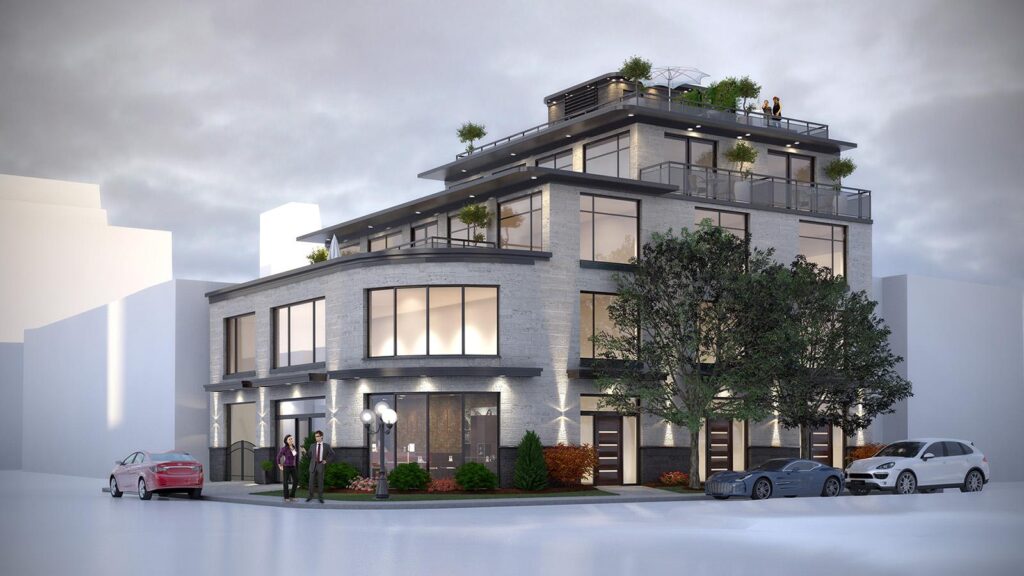Architectural 3D Rendering
Architectural 3D Rendering
The architecture rendering software enables users to create two-dimensional and three-dimensional images of an architectural design. Architects and interior designers use architectural rendering software to enhance their designs and create a more realistic representation of the final design.
Large construction companies in the US are working on large construction projects that use 3D rendering services for presentation and marketing.
Many 3D rendering companies offer photorealistic and very detailed visual renderings for buildings, landscapes, house plans, etc. used by architecture and interior designers.
We offer complete 3D rendering and walkthrough services before the commencement of the project for the construction stage. We also provide different types of rendering 3D floor plan rendering, CAD plan rendering, interior and exterior rendering, object-oriented rendering

We have a team that is highly skilled and professionally qualified in architectural engineering who enable and provide the result-oriented output. Serving the best 3D rendering services in a different view as per the client’s requirement and their needs.
Provides fast and accurate feedback on timescales and methodologies
Provides a clear impression of how the asset will appear, rather than having to envisage that from plans or Gantt charts
It is powerful tool for communicating the impact of built assets
Enhances coordination and eliminates rework
FAQ
1. What is Architectural 3D Rendering?
Architectural 3D rendering is the process of creating photorealistic images or animations of a building or structure from a 3D model. These images showcase the final design in realistic lighting, textures, and environments, providing a detailed visual representation of how the building will look once constructed.
2. What are the main benefits of Architectural 3D Rendering?
- Realistic Visualization: Provides a lifelike representation of the design, allowing clients, architects, and stakeholders to see what the building will look like before construction begins.
- Improved Client Communication: Clients can better understand the design concept, layout, and overall aesthetic, leading to more informed decisions and fewer changes during construction.
- Enhanced Marketing and Presentation: 3D renderings are often used for promotional materials, advertisements, and investor presentations, helping to showcase the design in the most appealing way.
- Faster Decision-Making: Stakeholders can make decisions quickly based on realistic renderings, saving time in the design process.
3. What software is used for Architectural 3D Rendering?
Several software tools are used to create architectural 3D renderings:
- V-Ray: A popular rendering plugin used with 3D modeling software like SketchUp, Rhino, and Revit for high-quality renderings.
- Lumion: A real-time 3D visualization software that allows architects to create stunning renderings quickly.
- Corona Renderer: Known for its ease of use and photorealistic results, often used with 3D modeling software like 3ds Max.
- Enscape: A real-time 3D rendering and virtual reality tool that integrates well with Revit, SketchUp, and Rhino.
- KeyShot: A 3D rendering software that provides photorealistic renderings, typically used in product and architectural visualizations.
- Blender: A free, open-source 3D creation suite that also offers high-quality rendering capabilities.
4. How long does it take to create an Architectural 3D Rendering?
The time required to create a 3D rendering depends on the complexity of the project, the level of detail, and the rendering quality. A simple residential rendering may take a few hours to a day, while large-scale commercial or highly detailed renderings can take several days or even a week or more. The more intricate the textures, lighting, and environment, the longer the rendering process may take.
5. How accurate are 3D Renderings?
Architectural 3D renderings are highly accurate as long as they are based on a well-detailed 3D model. The accuracy depends on:
- The level of detail included in the model.
- The quality of the textures and materials.
- The realism of the lighting and environmental effects.
- Proper scaling and proportions.
However, it’s important to remember that renderings are visual representations and may not fully capture the nuances of the final physical building, such as the feel of materials or lighting changes in real-time.
6. How much do Architectural 3D Renderings cost?
The cost of 3D renderings varies depending on the complexity, size of the project, and level of detail. Basic renderings for smaller projects may start at a few hundred dollars, while large-scale or highly detailed renderings can cost several thousand dollars. The price is also influenced by the number of images or animations required and the turnaround time.
Get In Touch
Contact us today to discuss your project needs and discover how we can support your goals.
